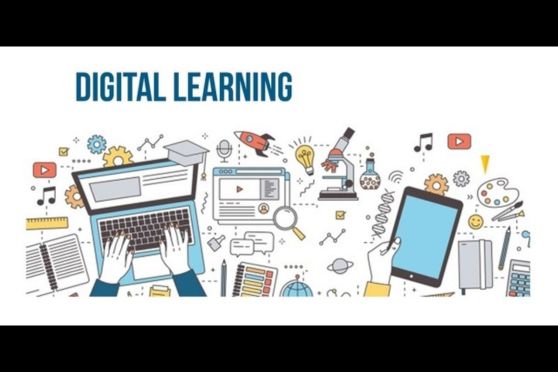Teaching digital natives: Redefining teaching paradigms for future generations


For years, the educational system structure that we taught and learned from was designed for an analog world, created and cemented before the internet revolution. In most parts, what we learn today in school was built to meet the requirements of the industrial revolution; designed for productivity, not creativity. It is a linear, procedural way of learning that is based on knowing facts. In the past, the accumulated knowledge held in the brain was sufficient. In today’s modern world, it is just not enough. For Generation Alpha (those born between 2010 and the present), access to information, and being connected and engaged, is second nature. They are faster-paced, more visually focused, more nonlinear in learning, and more importantly, they are always willing to unlearn and relearn because the world around them changes so quickly.
Sir Ken Robinson provides an interesting take – “Our children are living in the most intensely stimulating period in the history of the earth. They’re being besieged with information and coerced for attention from every platform: computers, iPhones, advertising hoardings, and hundreds of television channels. And we’re penalising them now for getting distracted. From what? Boring stuff. At school, for the most part.”
I’d like to add a caveat here. Is studying boring? Yes, for a good number. But is learning boring? Not in the least.
The approach towards teaching and learning concepts is what makes studying boring for most students. For example, a lab experiment – which is designed for inquisitive learning – has somehow transformed into a prescription task. Students are expected to follow a bunch of steps, take the readings, prepare a report, come to a forgone conclusion, and hopefully get good grades. However, this procedural learning does not stimulate the mind enough, there is no joy of discovery. Hence, boring.
How do we meet the learning needs of digital natives?
Keeping pace with what Gen Alpha expects, what we teach, and how we teach requires deep thought. As educators, we must remember that we are teaching students who will enter the workforce 20 years from now. In an ever-changing world, predicting even the next five years is impossible, let alone 20. However, efforts such as the National Education Policy have created a structural framework to help education stakeholders better prepare for the future of learning and teaching. The new policy seeks to encourage experiential and hands-on learning for STEM subjects. It emphasises critical thinking, inquiry-based, discovery-based, discussion-based, and analysis-based learning to make classes more engaging. By introducing new subjects at a young age, such as Artificial Intelligence (AI), computational thinking, machine learning (ML), and Design Thinking, the policy is well-placed to keep us more aligned with the future of technology and its role in education.
Embracing technology
As our world rapidly evolves and becomes more interconnected, it is crucial that education continues to adapt and pivot for digital learners. Students who have grown up with technology as a constant presence in their lives need authentic learning experiences that allow them to apply what they have learned in real-world contexts. As a first step to achieve this, teachers must integrate technology into the curriculum as a forethought and not an afterthought. In doing so, we can create an environment of divergent thinking within classrooms to help students learn skills and abilities for real-world problems.
This shift from content-based learning to skill-building can be achieved through the implementation of flexible and hybrid learning models that incorporate both online and offline learning and focus on collaborative learning which allows students to learn at their own pace and style. Another effective approach is incorporating simulated labs, experiential centers, and gamified content into the curriculum. For example, a simulated lab in a science class could allow students to conduct virtual experiments and observe the results. Experiential centers can be used to teach students about different cultures and societies by immersing them in simulations of real-world environments. At BYJU’S, we have observed how gamified content, such as interactive quizzes or educational games, makes learning much more engaging and fun for students by incentivising their academic progress. Features such as points, badges, leaderboards, and rewards keep students motivated and actively engaged in their learning journeys.
In this context, the popular quote "Education must not simply teach work - it must teach Life" takes on deeper significance as it highlights the creative role that edtech could play in fostering critical thinking, problem-solving, and developing the minds of a whole emerging generation. To redefine teaching paradigms we must ensure educators are supported by technology at a scale that connects them to people, data, content, resources, and evolving techniques to create a brighter future for students.
Only when equipped with the right technology, can educators easily facilitate this transformation of education into a lifelong journey. Harnessing the benefits of digital tools will help us go beyond just preparing our young digital natives for work, and instead equip them with the skills and knowledge needed to navigate the complexities of life.
Vinay MR is the Chief Content Officer at BYJU’S. As a founding member, he has been an integral part of BYJU’S since its inception, creating a unique and highly skilled team. He is responsible for creating and integrating original content, interactive simulations as well as elements such as in-air projections in order to create fun and engaging videos.